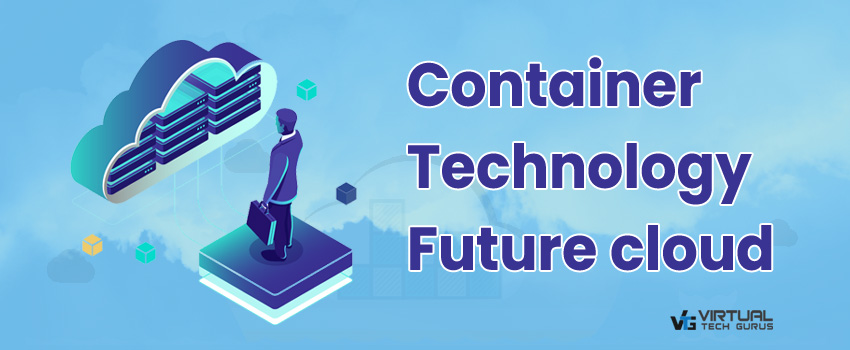
Container Technology – Future cloud
Containerization
Transferring software from one environment to another can be a smooth process, thanks to software containers. During such a transfer, the software usually finds it difficult to run in the new environment. It could be due to issues related to the new operating system, network protocols, security and storage standards.
Containers comes to the rescue here. It helps to run any application in any environment thanks to bundling of all the features, supporting attributes, configuration files, and so on into one entity. This ensures any incompatibilities between the old and the new environment can be safely and conveniently ignored.
Containers, unlike Virtual Machines(VM), are lightweight and provide encapsulated application environments, that can move between clouds without significant rework. Containers use the same host Operating System(OS) repeatedly, instead of installing an OS for each guest VM. Both cloud providers and enterprises are excited about containers’ potential. Major cloud providers including Google, Amazon Web Services and Microsoft are already on board.
Also, Platform-as-a-Service(PaaS) clouds can use containers to manage and orchestrate applications. Although VMs are ultimately the medium to provision PaaS platform and application components at the infrastructure layer, containers appear to be more suitable for application packaging and management in PaaS clouds.
Two notable players – Docker, CoreOS
In the last two years, companies have also begun to embrace container technologies, such as Docker, to help them standardize and streamline the way they package and deploy code.
Docker has become a popular name in container technology within a short time. According to industry analyst firm 451 Research, “Docker is a tool that can package an application and its dependencies in a virtual container that can run on any Linux server. This helps enable flexibility and portability on where the application can run, whether on premises, public cloud, private cloud, bare metal, etc. It was in March 2013 that Docker launched the first iteration of Docker Hub as the canonical platform for publishing and consuming Docker container images. Development teams use Docker Hub to publish and consume containerized software, and automate their delivery and deployment pipelines.
And today Docker is not the only player in the game that’s making waves.
Rocket is a notable competitor to Docker, although the latter is the leading player in the space and already has allegiance from Google, Red Hat, and EMC-VMware. Rocket (rkt) is a command line tool for running app containers produced by CoreOS which was announced in December 2014.
After being in works for more than a year, CoreOS‘s container runtime environment, Rocket (rkt), hit version 1.0 on February 4, 2016 and according to the company, it’s now ready for production use. Version 1.0 introduces a number of new security features and, going forward, any changes to the command line interface and on-disk format will be backwards compatible.
While rkt is a competitor to the Docker runtime, users will still be able to run application containers that use the Docker image and have been built with Docker tools. It also has its own format, App Container Image (ACI).
What’s in store for containers in 2020?
Continued rise of container is a given. The whole cloud system will be designed around the use of containers, as well as allowing containers to scale. Containers also increase virtual machine count by more than 3 times in any given server, which will delay hardware purchases by the giant cloud providers.
According to Rightscale’s 2020 State of the Cloud Survey, Overall, Docker container adoption has increased to 57%,. Meanwhile, 66% of enterprises utilize Docker. There are currently over 5 million users registered users on Docker Hub.
But containers are still not as secure as virtual machines. The reason is, if there’s a vulnerability in the kernel, it could provide a way in to the containers that are sharing it. Companies like CoreOs has already come up with focus on security with its latest release. And so, container security and management will be a focus in 2020 as well.
Check out our articles and infographics.
